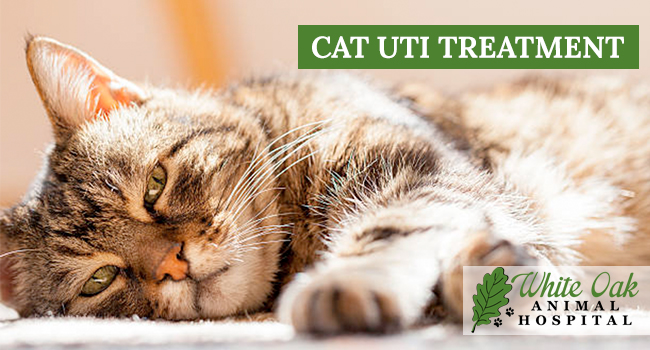The Ultimate Guide to Cat UTI Treatment: A Comprehensive Overview for English Authors
Addressing cat urinary tract infections (UTIs) is crucial for the well-being of our feline companions. In this comprehensive guide, we will provide you with valuable information on cat UTI treatment. Whether you are an English author looking to educate your audience or a concerned cat owner seeking guidance, this article will cover the essential aspects of cat UTIs and their treatment.

Understanding Cat UTIs
A cat urinary tract infection, commonly known as a UTI, occurs when bacteria enter the urinary system, causing inflammation and discomfort. Several factors can contribute to the development of UTIs in cats, including bacterial infections, bladder stones, or anatomical abnormalities.
Recognizing the symptoms of a UTI is crucial for prompt diagnosis and treatment. Look out for signs such as frequent urination, straining to urinate, blood in the urine, and urinating outside the litter box. If you notice any of these symptoms, it is essential to consult a veterinarian for a thorough examination.
Diagnosing a cat UTI typically involves a physical examination, urine analysis, and sometimes additional tests like urine culture or imaging studies. Accurate diagnosis is crucial to determine the underlying cause and prescribe appropriate treatment.
Traditional Treatment Methods
When it comes to treating cat UTIs, traditional methods often involve the use of antibiotics. Your veterinarian will prescribe the appropriate antibiotic based on the type of bacteria causing the infection. It is important to follow the recommended dosage and complete the full course of antibiotics, even if your cat’s symptoms improve before the treatment is finished. This helps ensure that all the bacteria are eliminated and reduces the risk of recurrence.
While antibiotics are effective in treating UTIs, they may have potential side effects. These can include gastrointestinal upset, allergic reactions, or the development of antibiotic-resistant bacteria. It is important to discuss any concerns or observed side effects with your veterinarian.
In addition to antibiotics, supportive care is essential for a successful recovery. Ensuring your cat stays well-hydrated by providing fresh water and monitoring their urine output is crucial. Maintaining a clean litter box and reducing stress in their environment can also aid in their recovery. Additionally, your veterinarian may prescribe pain medication to alleviate any discomfort your cat may be experiencing.
Holistic Approaches to Cat UTI Treatment
While traditional treatments are effective, some cat owners may be interested in holistic approaches to complement their cat’s UTI treatment. These approaches focus on promoting overall urinary health and reducing the risk of future infections.
Diet modification plays a significant role in holistic cat UTI treatment. Feeding your cat a high-quality, balanced diet that supports urinary health is crucial. Look for cat foods specifically formulated to promote urinary tract health, which may have reduced levels of certain minerals that contribute to the formation of urinary crystals or stones.
Natural remedies and supplements can also be beneficial in supporting your cat’s urinary health. Cranberry and D-Mannose are commonly used to promote a healthy urinary tract. These supplements can help prevent bacteria from adhering to the bladder wall, reducing the risk of infection. Herbal options such as uva ursi and marshmallow root may also have antimicrobial and anti-inflammatory properties.
Probiotics can play a role in maintaining a healthy balance of bacteria in your cat’s urinary tract. These beneficial bacteria can help prevent the overgrowth of harmful bacteria that can lead to UTIs. Consult with your veterinarian about suitable probiotic options for your cat.
Reducing stress and providing environmental enrichment is another important aspect of holistic cat UTI treatment. Stress can weaken the immune system, making cats more susceptible to infections. Providing a calm and enriching environment with hiding spots, scratching posts, and interactive toys can help reduce stress and promote overall well-being.
Promoting increased water intake is crucial for urinary health. Encourage your cat to drink more water by providing multiple clean water sources throughout the house and considering a water fountain, as cats are often attracted to running water. Wet food can also contribute to their overall hydration.
Preventive Measures
Preventing cat UTIs is essential to avoid recurring infections and maintain your cat’s urinary health. By taking proactive measures, you can significantly reduce the risk of future UTIs:
Proper hygiene and litter box maintenance: Regularly clean the litter box to prevent the accumulation of bacteria. Use unscented litter and avoid strong cleaning agents that may irritate your cat’s urinary tract.
Encouraging regular exercise and playtime: Physical activity helps promote overall health and can reduce stress levels in your cat. Engage your cat in interactive play sessions and provide opportunities for exercise.
Promoting a stress-free environment: Cats are sensitive to their surroundings, and stress can weaken their immune system. Create a calm and peaceful environment by providing hiding spots, vertical spaces, and a consistent routine.
Regular veterinary check-ups and monitoring: Routine check-ups allow your veterinarian to monitor your cat’s urinary health and detect any potential issues early on. Regular urine tests can help identify any underlying problems before they develop into full-blown infections.
Frequently Asked Questions
What are the primary causes of cat UTIs?
Cat UTIs can be caused by bacterial infections, bladder stones, anatomical abnormalities, or underlying health conditions.
Can male cats get UTIs?
Yes, male cats can develop UTIs. However, they are less common in males than in females due to differences in anatomy.
How can I tell if my cat has a UTI?
Watch out for symptoms such as frequent urination, straining to urinate, blood in the urine, and urinating outside the litter box. If you notice these signs, consult your veterinarian for a proper diagnosis.
Are there any home remedies I can try before visiting the vet?
While it’s important to consult a veterinarian for a proper diagnosis, you can encourage your cat to drink more water and provide a clean litter box to promote urinary health.
How long does it take for antibiotics to work in treating cat UTIs?
The duration of antibiotic treatment can vary depending on the severity of the infection. It’s important to complete the full course of antibiotics as prescribed by your veterinarian.
Can I use over-the-counter human UTI medications for my cat?
No, it is crucial to consult your veterinarian before administering any medications to your cat. Human medications may be toxic or ineffective for cats.
Are there any specific cat breeds more prone to UTIs?
While any cat can develop a UTI, some breeds, such as the Persian and Siamese, may be more prone to urinary issues due to genetic factors.
Can stress contribute to cat UTIs?
Yes, stress can weaken the immune system and make cats more susceptible to UTIs. Reducing stress through environmental enrichment and a calm atmosphere is beneficial.
What can I do to prevent future UTIs in my cat?
Maintain proper hygiene, provide a balanced diet, encourage hydration, and create a stress-free environment for your cat to promote urinary health and prevent future UTIs.
Are there any alternative treatments for cat UTIs?
While antibiotics are the primary treatment for UTIs, holistic approaches such as diet modification, natural remedies, and stress reduction techniques can complement traditional treatment methods.
Conclusion
In conclusion, addressing cat urinary tract infections (UTIs) is crucial for the well-being of our feline companions. This comprehensive guide has provided you with valuable information on cat UTI treatment. Whether you are an English author seeking to educate your audience or a concerned cat owner looking for guidance, the information presented here can help you understand and manage cat UTIs effectively.
Understanding the causes, symptoms, and diagnostic methods for cat UTIs is essential for accurate diagnosis and appropriate treatment. Traditional treatment methods, such as antibiotics and supportive care, play a vital role in eliminating the infection and promoting recovery.




